的点评
Beautiful façade with a Catalan style stone portal and a carved wooden door.
Chiesa San Francesco的点评
点评:The austere building of the church of San Francesco is located on the right corner of Piazza Mario Pagano.
The church has thirteenth-century origins, as demonstrated by the two writings on the main portal, and was dedicated to the Saint in 1274.
The exposed stone façade has a Catalan style stone portal which frames the carved wooden door made up of eight panels with different motifs including that of the Franciscan coat of arms consisting of a cross with two arms crossing each with a cross in the background, dated 1499.
On the left side there is the bell tower with a pyramidal cusp, divided into four levels with Gothic windows, rebuilt in the 16th century on the initiative of the Guevara counts of Potenza.
This is the only element of the ancient convent founded in 1265.
The interior of the church has a very simple layout with a single nave covered with wooden trusses and ending with the apse.
The Byzantine style icon of the Madonna of the Earthquake on a wooden panel, created between the end of the 13th and the beginning of the 14th century, is of fine workmanship.
A niche on the left wall houses the fresco depicting the Martyrdom of Saint Sebastian, the work of the famous painter Giovanni Todisco from Abriola, dating back to the mid-16th century.
On the right wall of the nave is the funerary monument of Donato de Grasis made of limestone and dated 1534. The deceased is lying on a sarcophagus while above, housed in a lunette, there is the Madonna and Child between two kneeling angels. Also along the right wall are the wall paintings depicting St. Clare and St. Francis of Assisi attributed to Nicola da Novi.
St. Clare is depicted in a frontal position with the Franciscan robe and a book in his left hand, while decorative geometric motifs are painted in the upper band.
St. Francis is in an upright position, with his head uncovered, his habit tied at the waist by a cord and a book in his left hand.
It is a very simple church, stripped of frills and decorations, but there is a lot of spirituality inside, as often happens in the first Franciscan churches.
Recommended.
The church has thirteenth-century origins, as demonstrated by the two writings on the main portal, and was dedicated to the Saint in 1274.
The exposed stone façade has a Catalan style stone portal which frames the carved wooden door made up of eight panels with different motifs including that of the Franciscan coat of arms consisting of a cross with two arms crossing each with a cross in the background, dated 1499.
On the left side there is the bell tower with a pyramidal cusp, divided into four levels with Gothic windows, rebuilt in the 16th century on the initiative of the Guevara counts of Potenza.
This is the only element of the ancient convent founded in 1265.
The interior of the church has a very simple layout with a single nave covered with wooden trusses and ending with the apse.
The Byzantine style icon of the Madonna of the Earthquake on a wooden panel, created between the end of the 13th and the beginning of the 14th century, is of fine workmanship.
A niche on the left wall houses the fresco depicting the Martyrdom of Saint Sebastian, the work of the famous painter Giovanni Todisco from Abriola, dating back to the mid-16th century.
On the right wall of the nave is the funerary monument of Donato de Grasis made of limestone and dated 1534. The deceased is lying on a sarcophagus while above, housed in a lunette, there is the Madonna and Child between two kneeling angels. Also along the right wall are the wall paintings depicting St. Clare and St. Francis of Assisi attributed to Nicola da Novi.
St. Clare is depicted in a frontal position with the Franciscan robe and a book in his left hand, while decorative geometric motifs are painted in the upper band.
St. Francis is in an upright position, with his head uncovered, his habit tied at the waist by a cord and a book in his left hand.
It is a very simple church, stripped of frills and decorations, but there is a lot of spirituality inside, as often happens in the first Franciscan churches.
Recommended.
翻译:圣弗朗西斯科教堂的简朴建筑位于马里奥帕加诺广场的右角。
教堂主门上的两处文字证明了这座教堂的历史可追溯至 13 世纪,并于 1274 年献给圣人。
裸露的石头外墙有一个加泰罗尼亚风格的石门,门框是雕刻的木门,门由八块面板组成,图案各异,包括方济会徽章,由一个十字架组成,两只手臂交叉,背景中有一个十字架,日期为 1499 年。
左侧是金字塔形尖顶的钟楼,分为四层,带有哥特式窗户,是在波坦察格瓦拉伯爵的倡议下于 16 世纪重建的。
这是这座始建于 1265 年的古老修道院的唯一元素。
教堂内部布局非常简单,只有一个中殿,上面覆盖着木桁架,最后是后殿。
木板上的拜占庭风格的地震圣母像创作于 13 世纪末至 14 世纪初,做工精细。
左墙上的壁龛里藏着描绘圣塞巴斯蒂安殉难的壁画,是阿布里奥拉著名画家乔瓦尼·托迪斯科的作品,其历史可以追溯到16世纪中叶。
中殿的右墙上是多纳托·德·格拉西斯 (Donato de Grasis) 的葬礼纪念碑,由石灰岩制成,日期为 1534 年。死者躺在石棺上,上方的半月形内有圣母和圣婴,中间有两个跪着的天使。右墙上还有描绘阿西西圣克莱尔和圣方济各的壁画,归因于尼古拉·达·诺维 (Nicola da Novi)。
圣克莱尔正面描绘方济各会长袍,左手拿着一本书,而装饰性几何图案则画在上部带子上。
圣弗朗西斯呈直立姿势,未戴帽子,长袍用绳子系在腰间,左手拿着一本书。
这是一座非常简单的教堂,没有多余的装饰和装饰,但里面充满了灵性,就像第一座方济各会教堂中经常发生的那样。
受到推崇的。
教堂主门上的两处文字证明了这座教堂的历史可追溯至 13 世纪,并于 1274 年献给圣人。
裸露的石头外墙有一个加泰罗尼亚风格的石门,门框是雕刻的木门,门由八块面板组成,图案各异,包括方济会徽章,由一个十字架组成,两只手臂交叉,背景中有一个十字架,日期为 1499 年。
左侧是金字塔形尖顶的钟楼,分为四层,带有哥特式窗户,是在波坦察格瓦拉伯爵的倡议下于 16 世纪重建的。
这是这座始建于 1265 年的古老修道院的唯一元素。
教堂内部布局非常简单,只有一个中殿,上面覆盖着木桁架,最后是后殿。
木板上的拜占庭风格的地震圣母像创作于 13 世纪末至 14 世纪初,做工精细。
左墙上的壁龛里藏着描绘圣塞巴斯蒂安殉难的壁画,是阿布里奥拉著名画家乔瓦尼·托迪斯科的作品,其历史可以追溯到16世纪中叶。
中殿的右墙上是多纳托·德·格拉西斯 (Donato de Grasis) 的葬礼纪念碑,由石灰岩制成,日期为 1534 年。死者躺在石棺上,上方的半月形内有圣母和圣婴,中间有两个跪着的天使。右墙上还有描绘阿西西圣克莱尔和圣方济各的壁画,归因于尼古拉·达·诺维 (Nicola da Novi)。
圣克莱尔正面描绘方济各会长袍,左手拿着一本书,而装饰性几何图案则画在上部带子上。
圣弗朗西斯呈直立姿势,未戴帽子,长袍用绳子系在腰间,左手拿着一本书。
这是一座非常简单的教堂,没有多余的装饰和装饰,但里面充满了灵性,就像第一座方济各会教堂中经常发生的那样。
受到推崇的。
旅行类型:情侣游
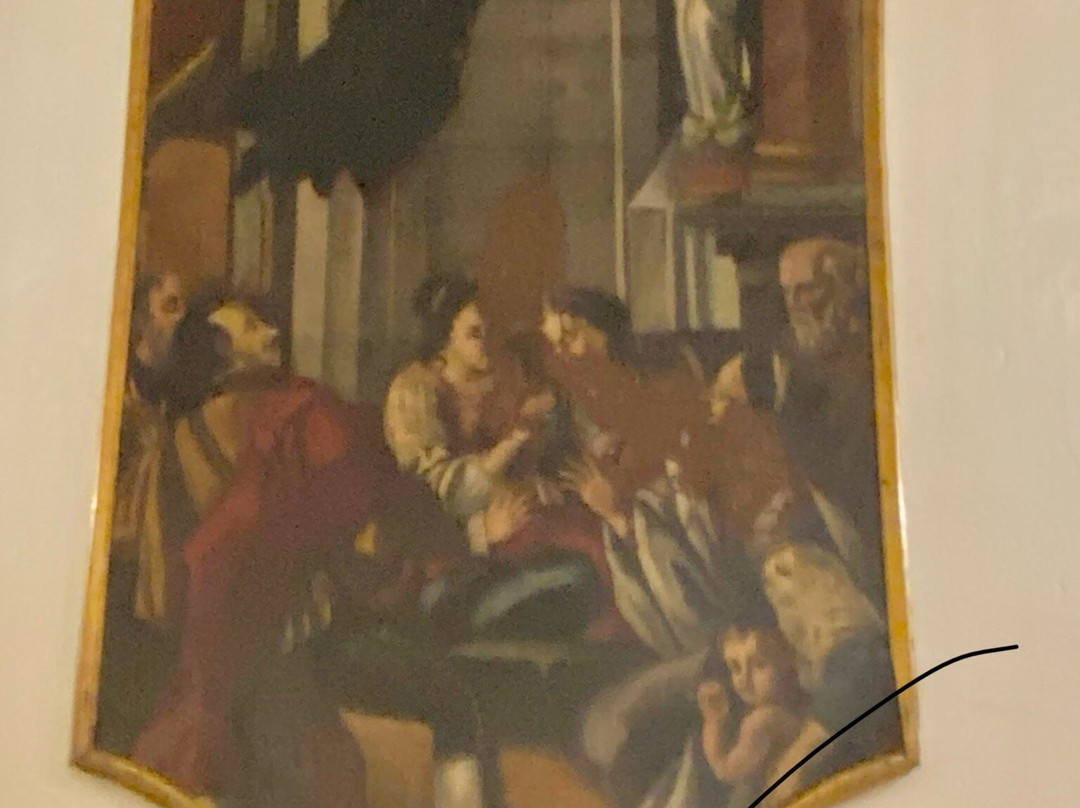

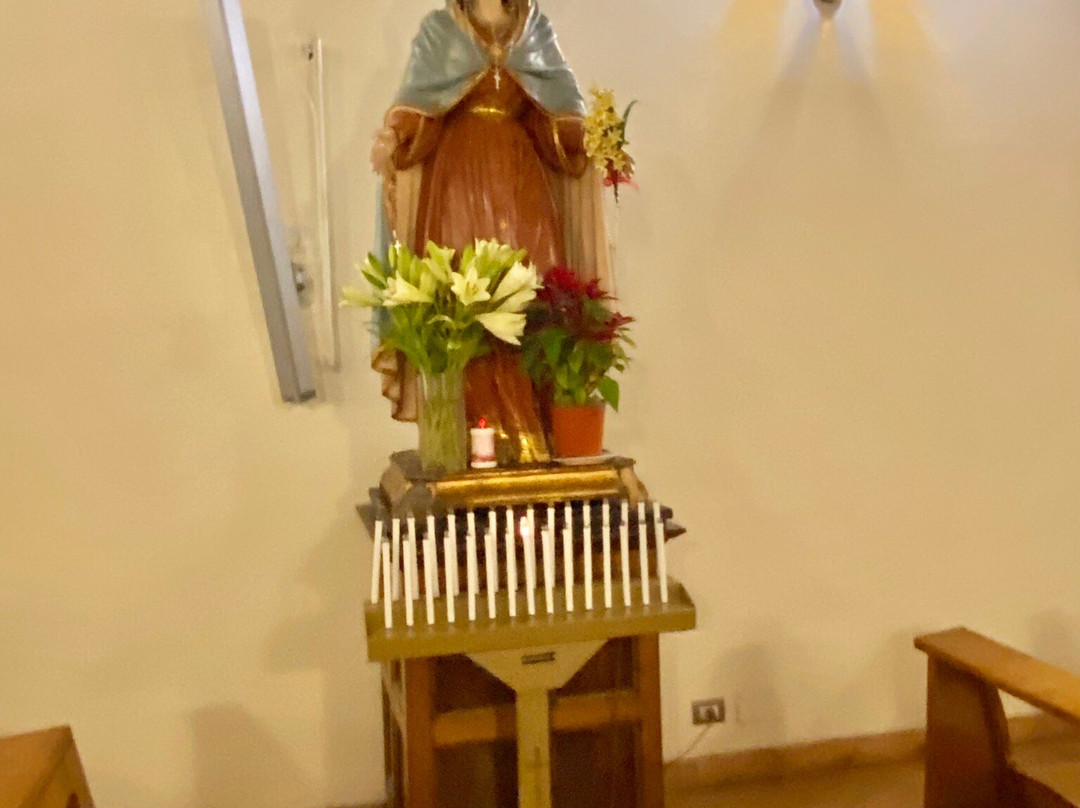
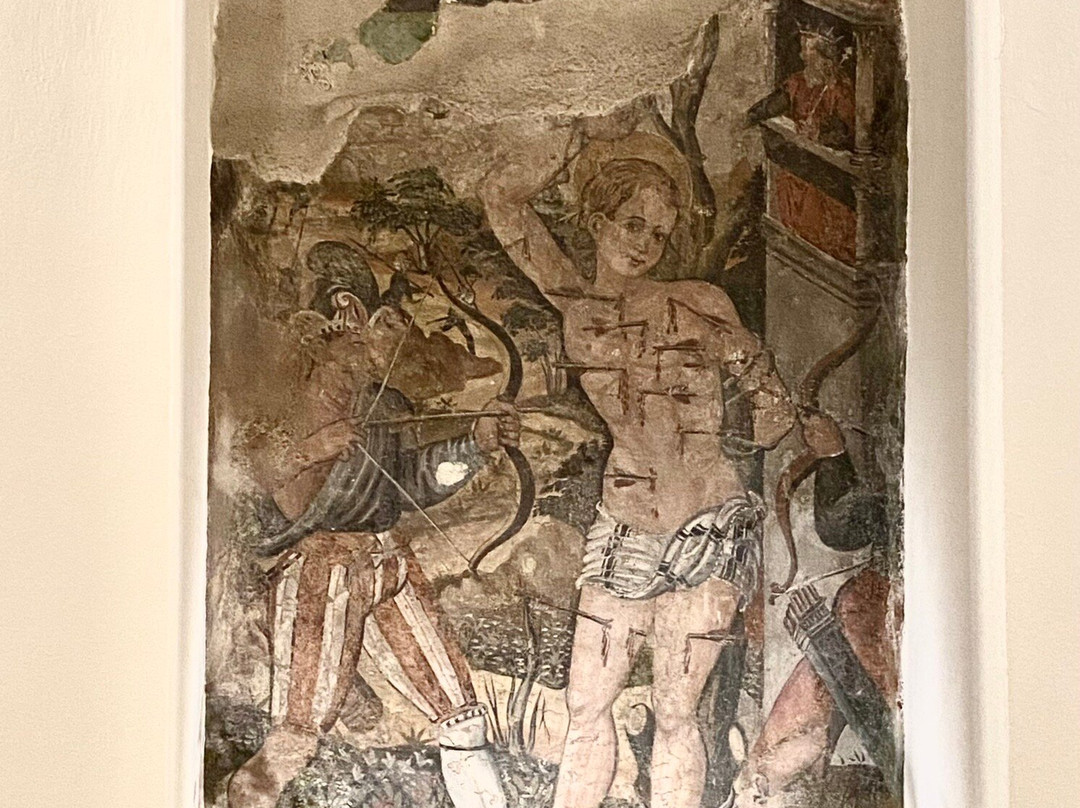
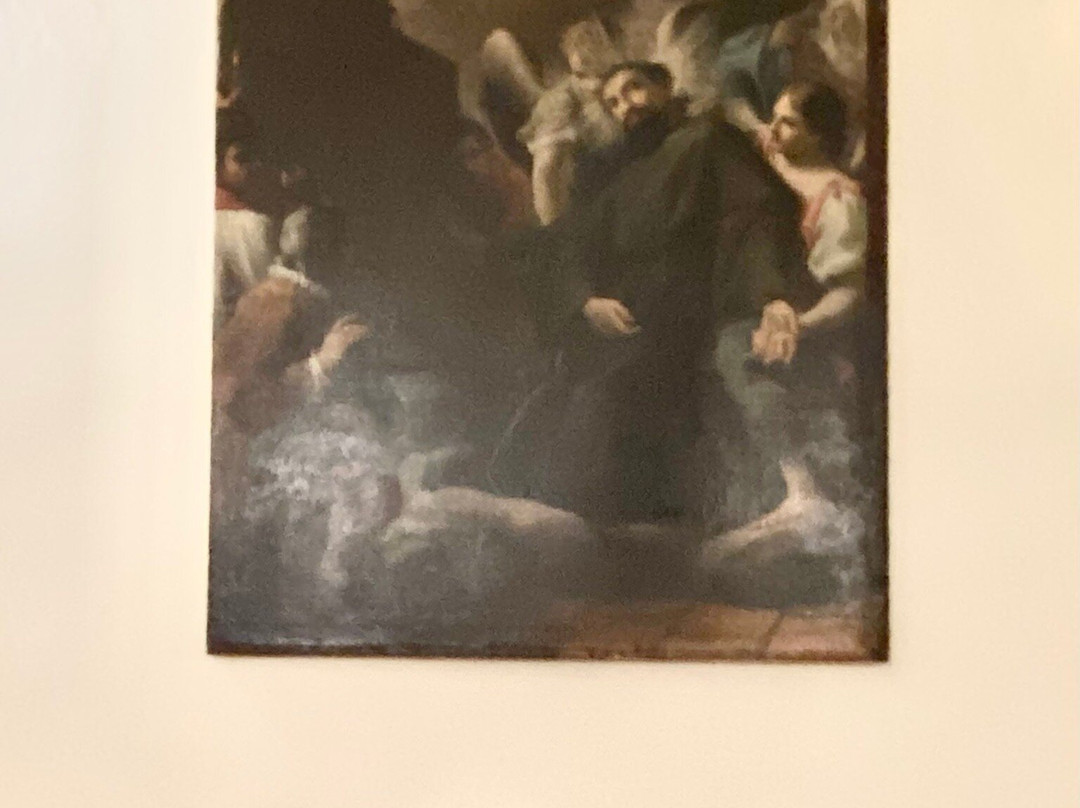
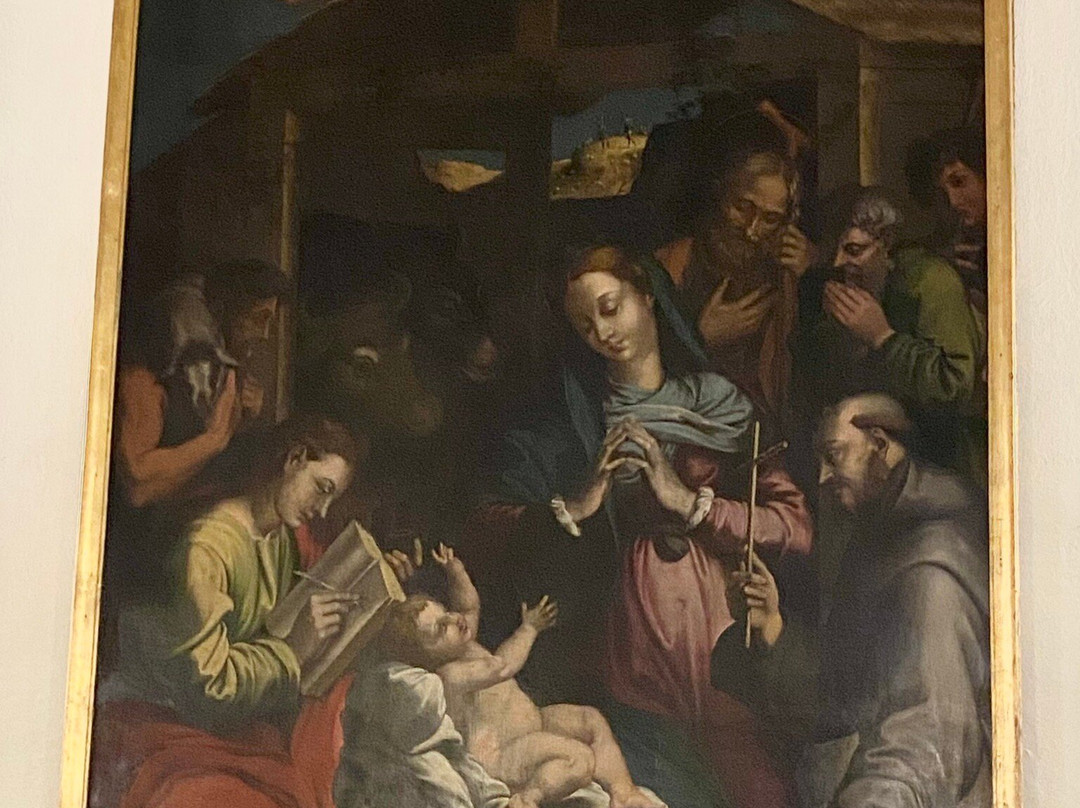
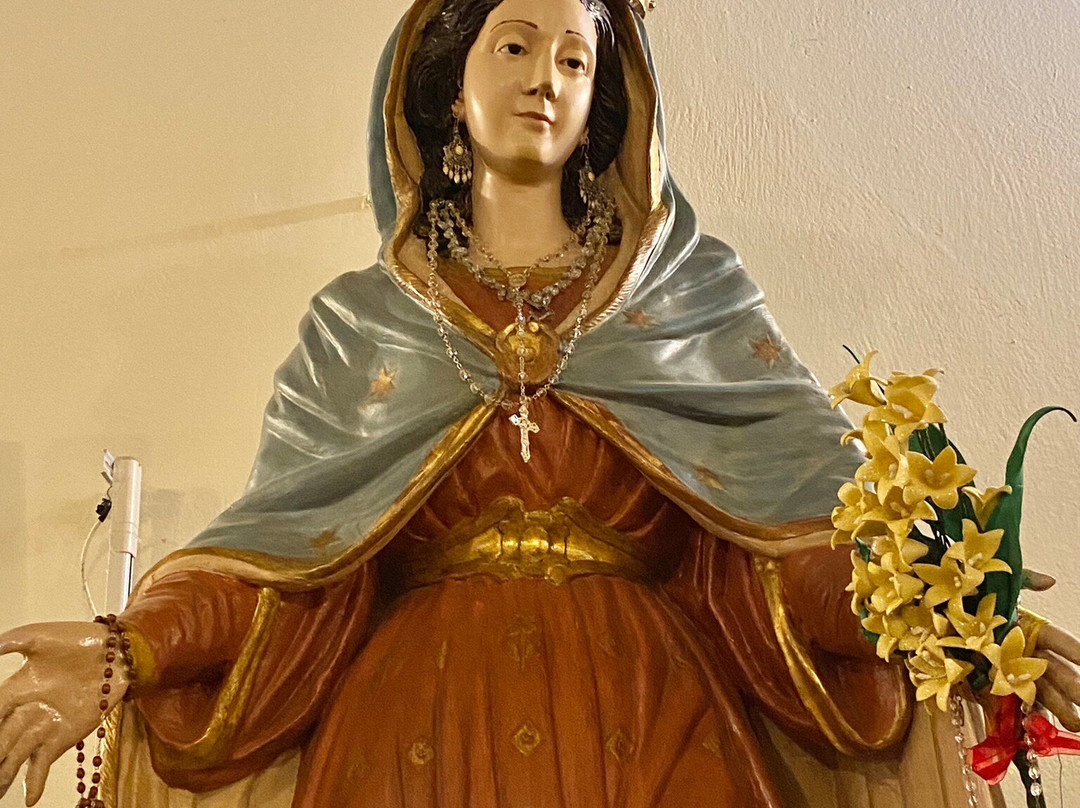

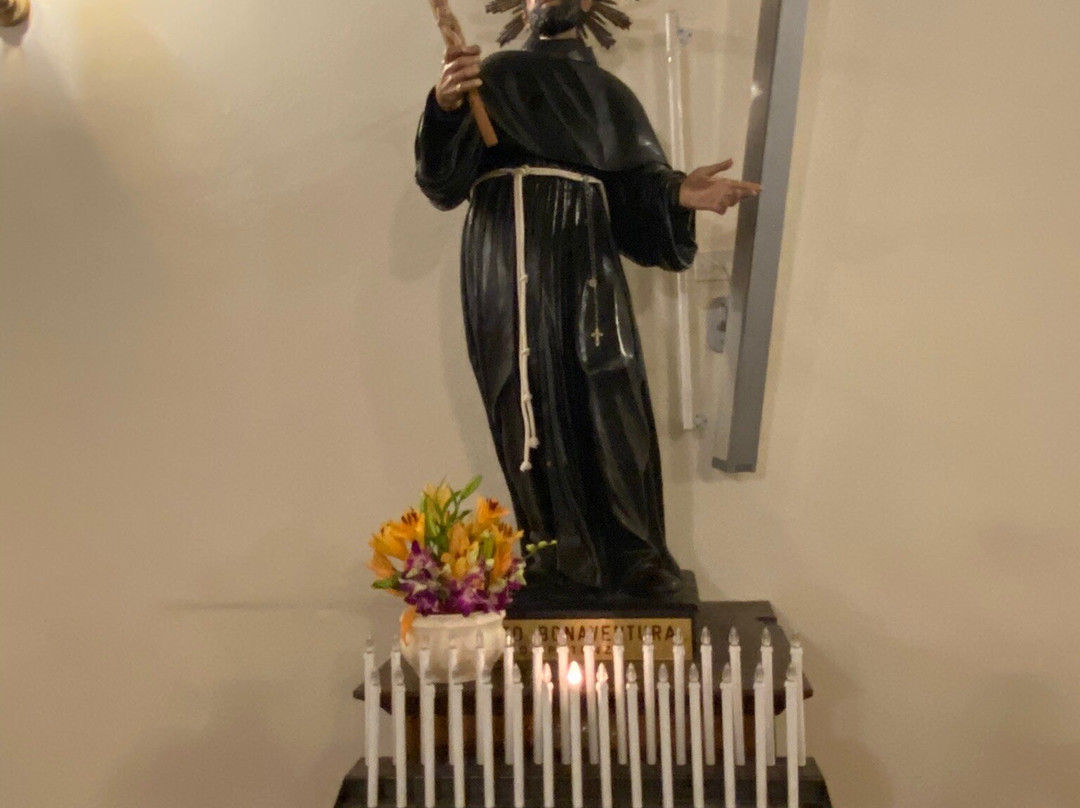

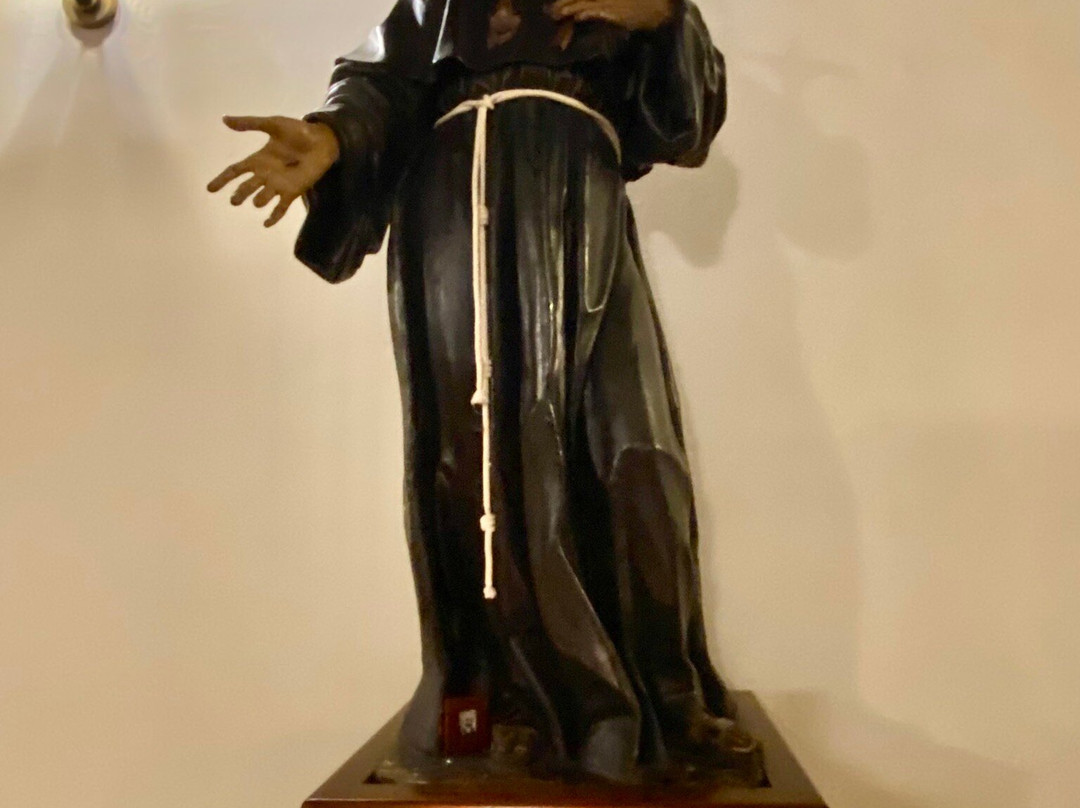
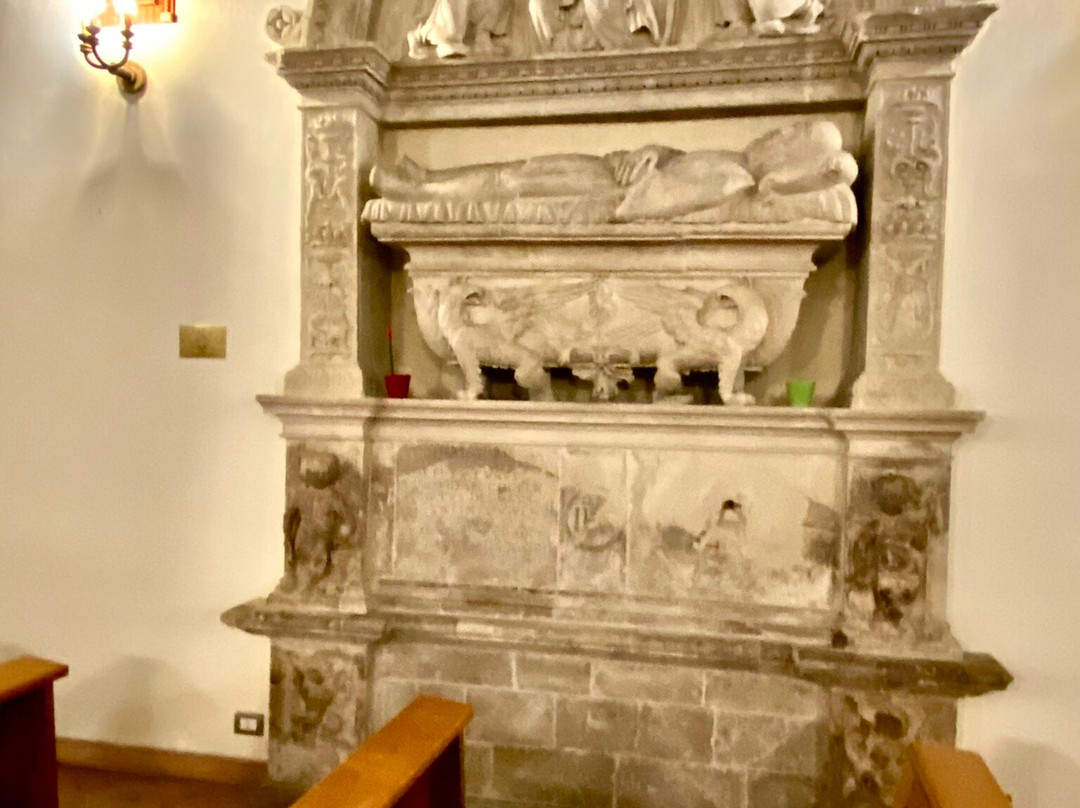
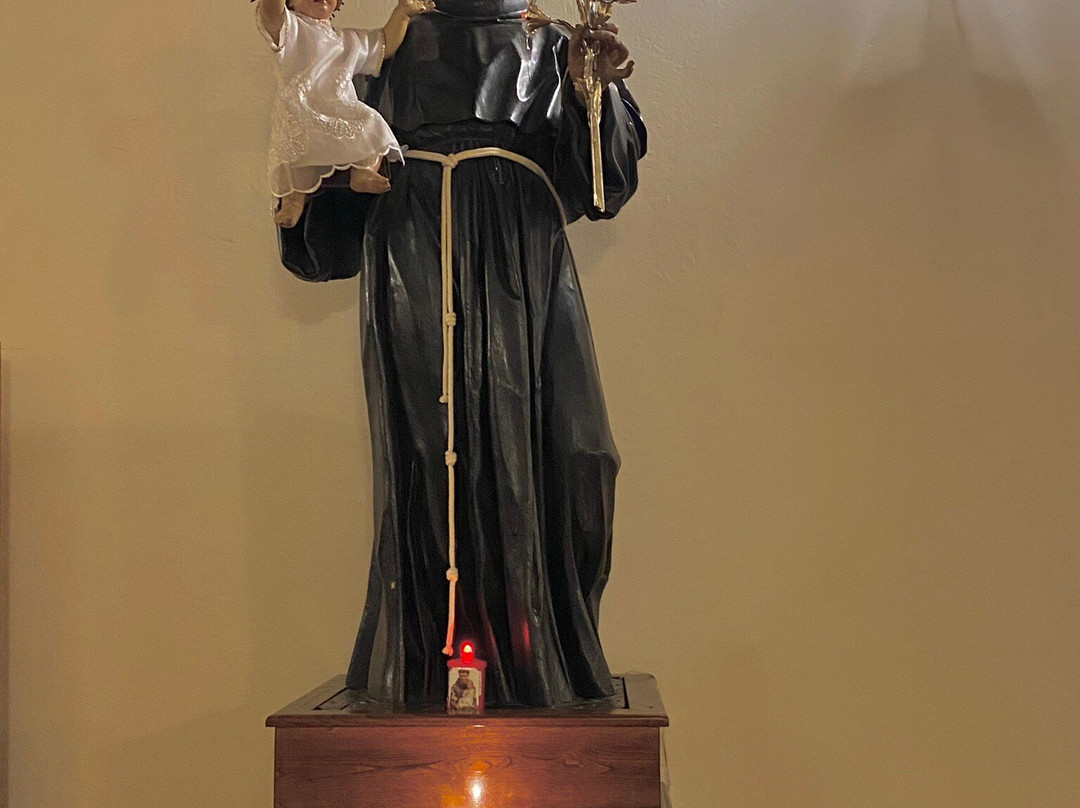
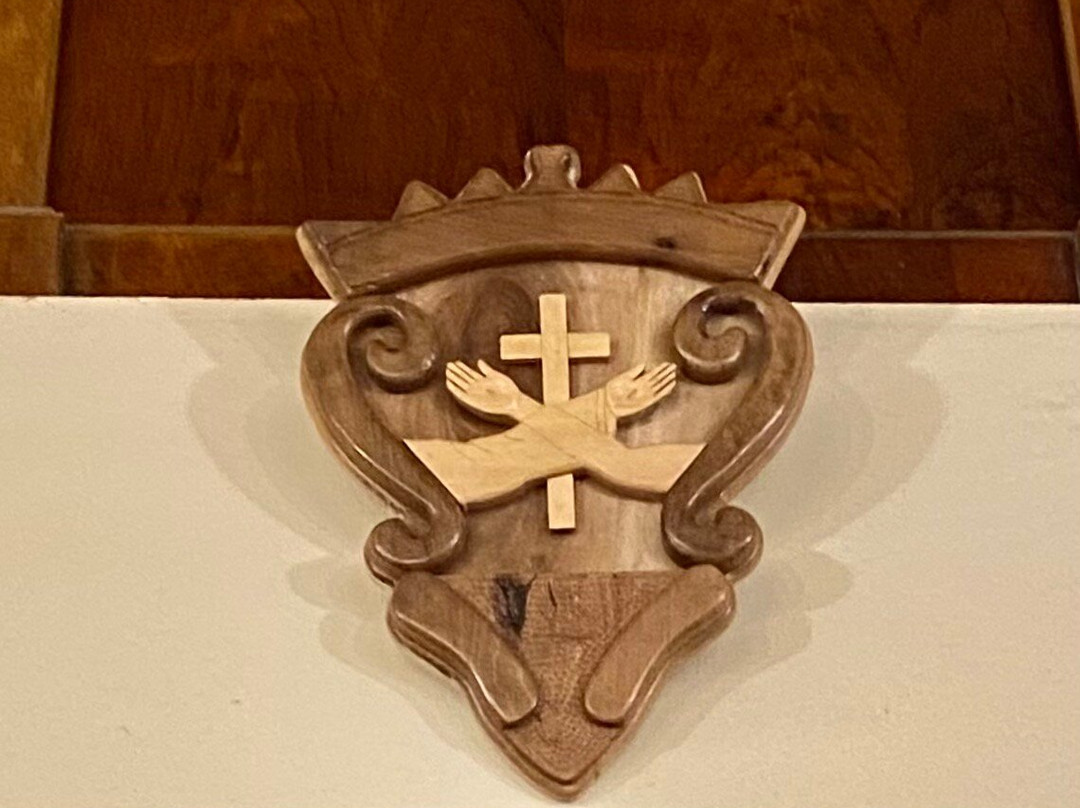

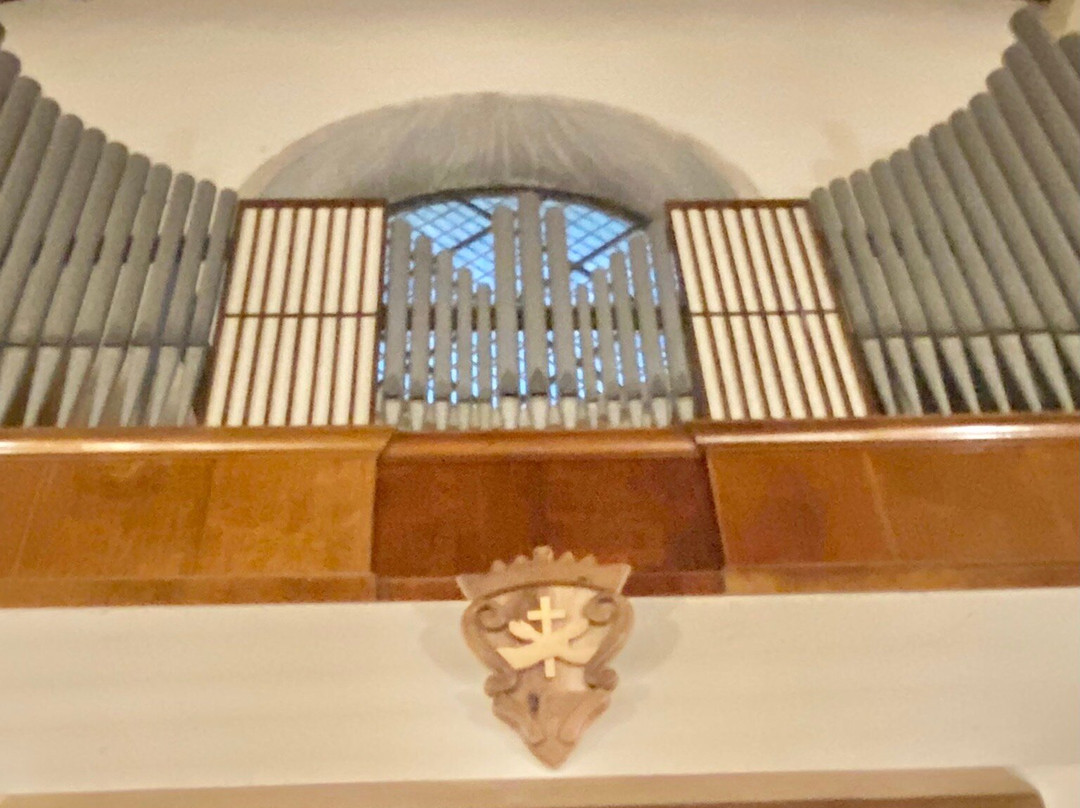
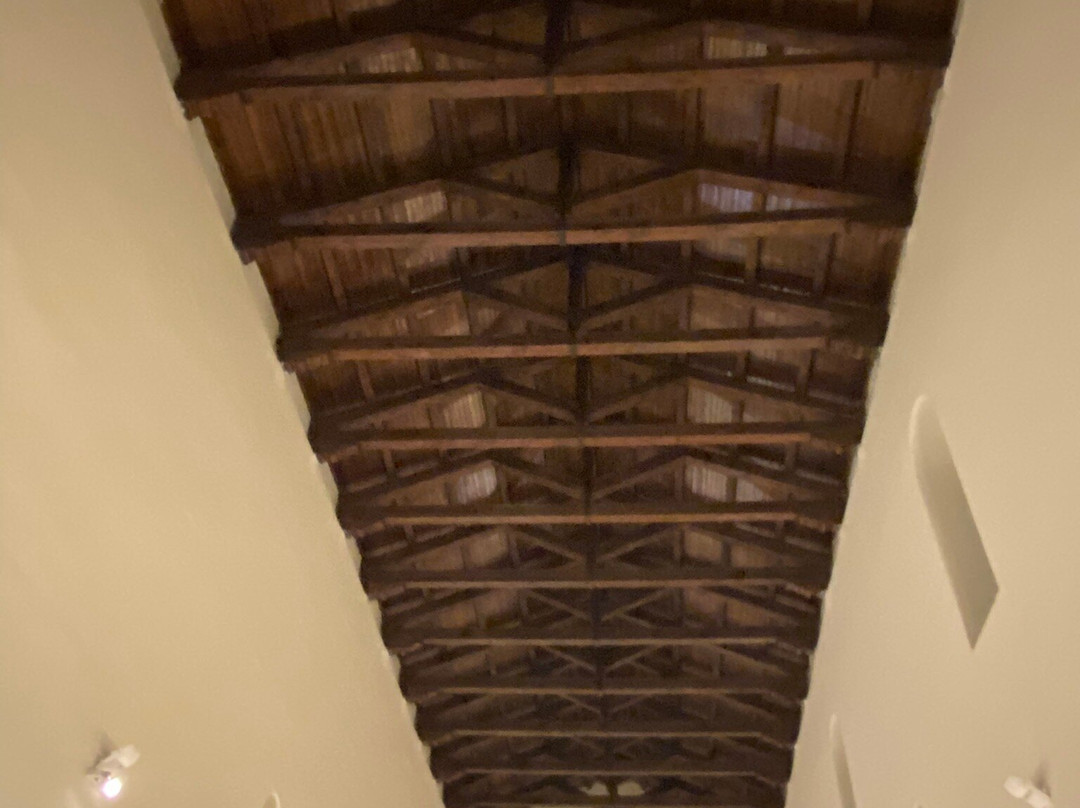
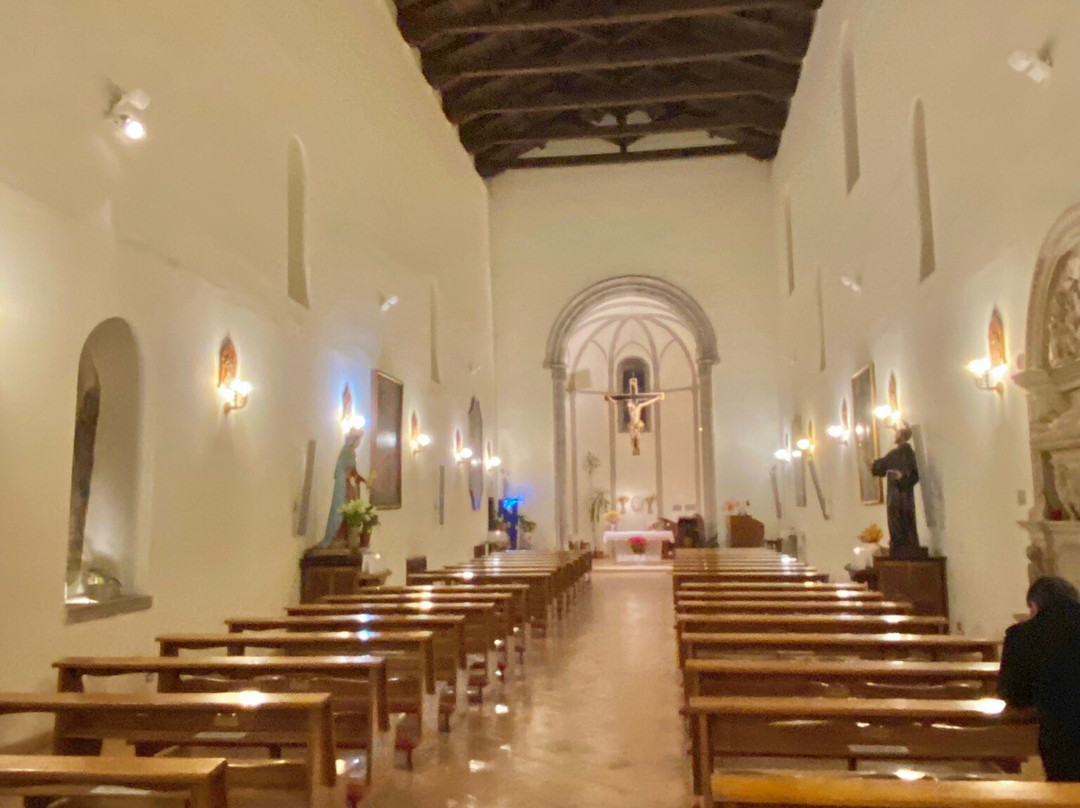
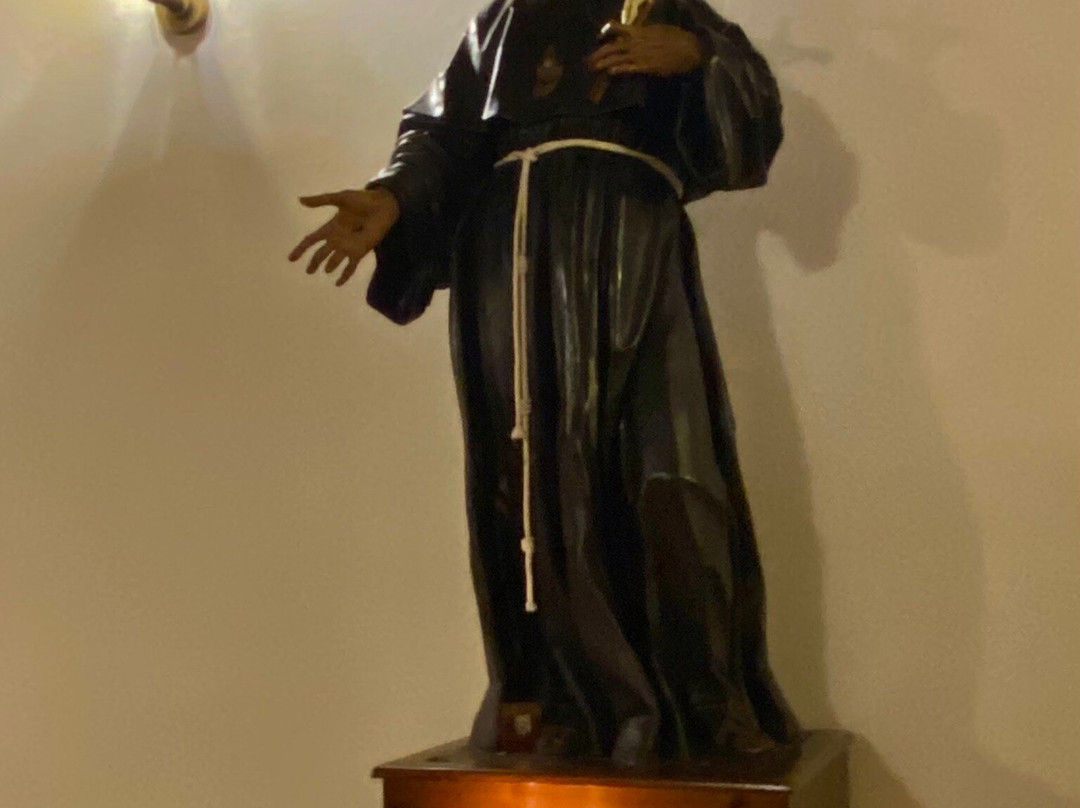
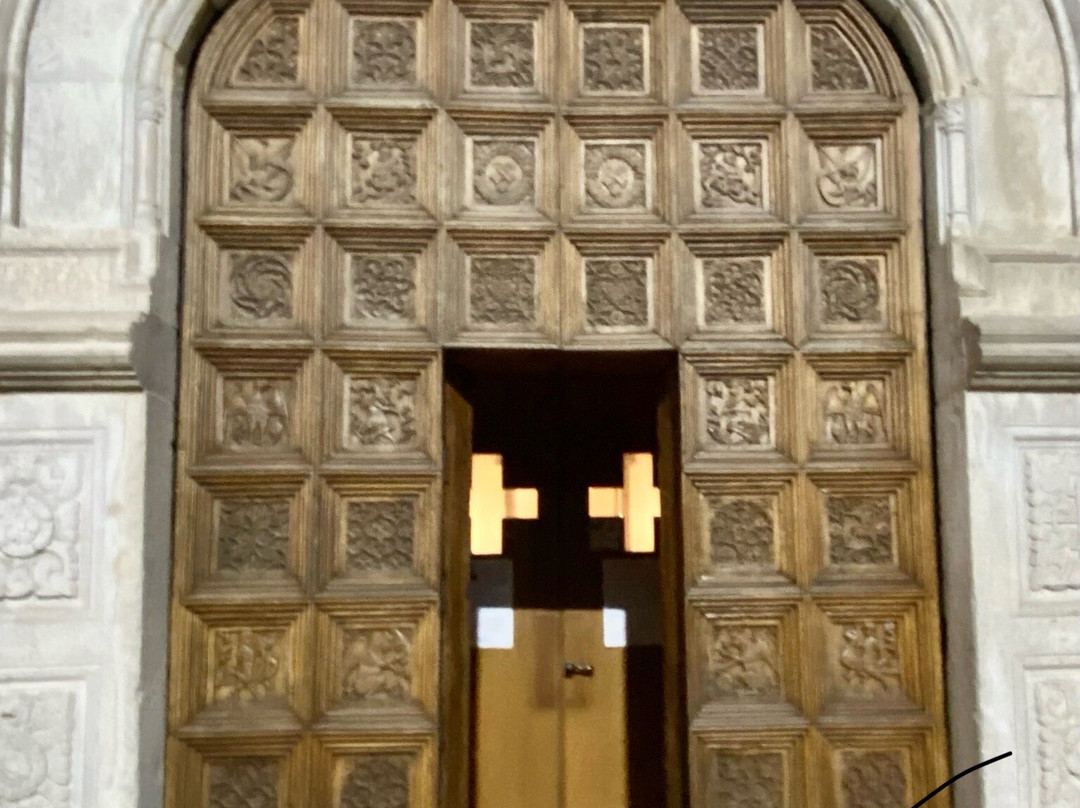
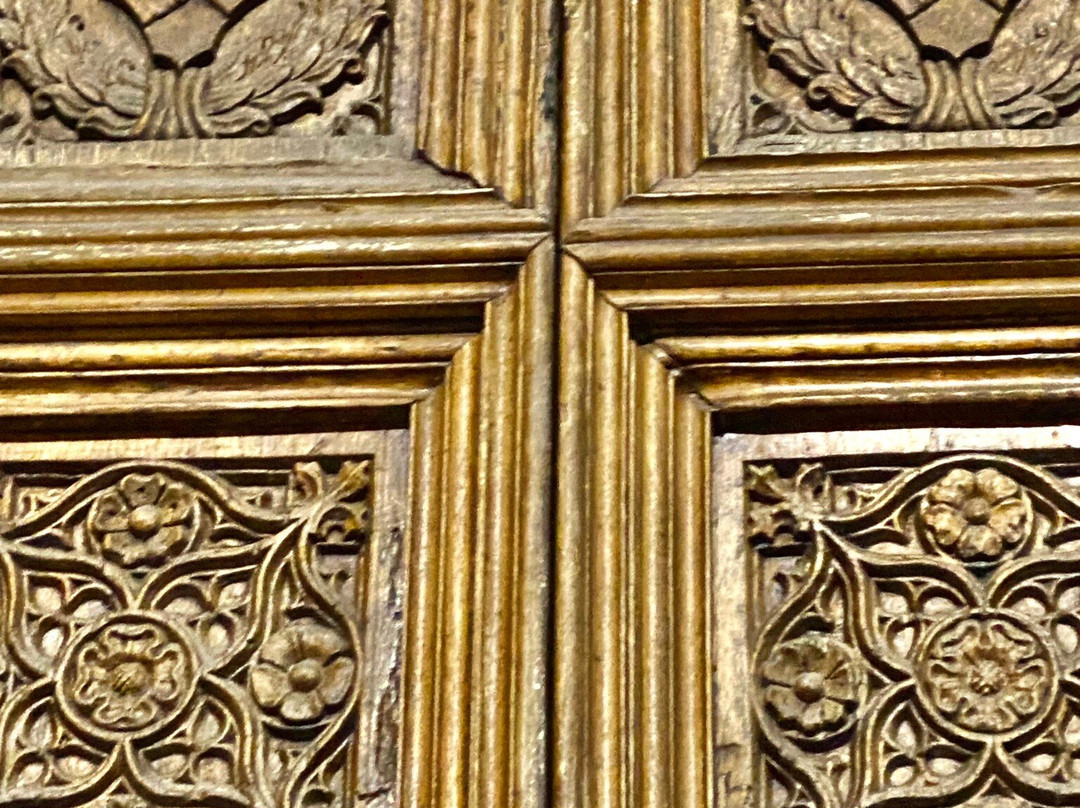
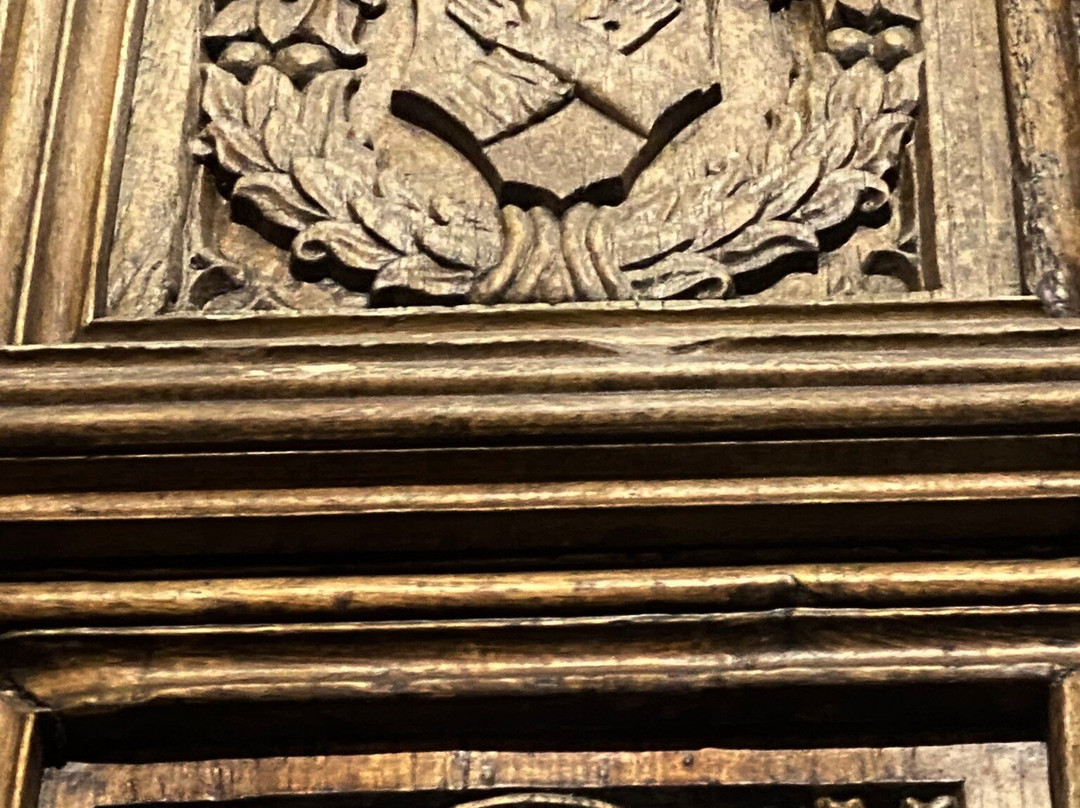
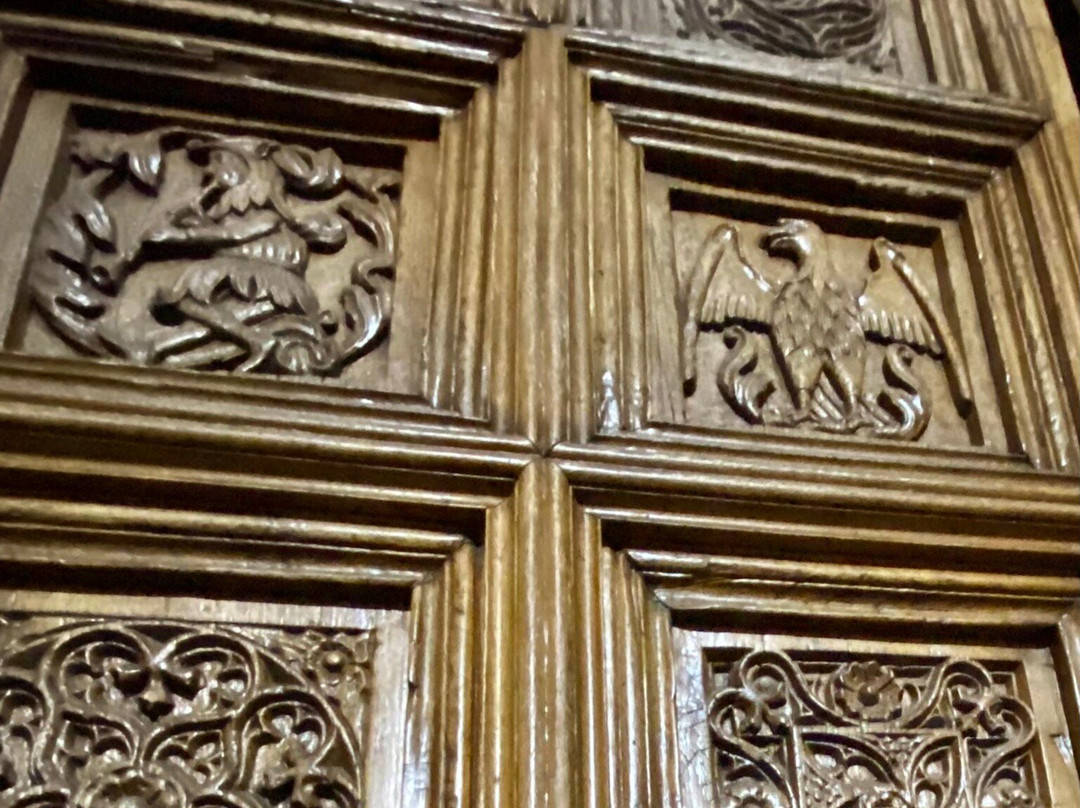
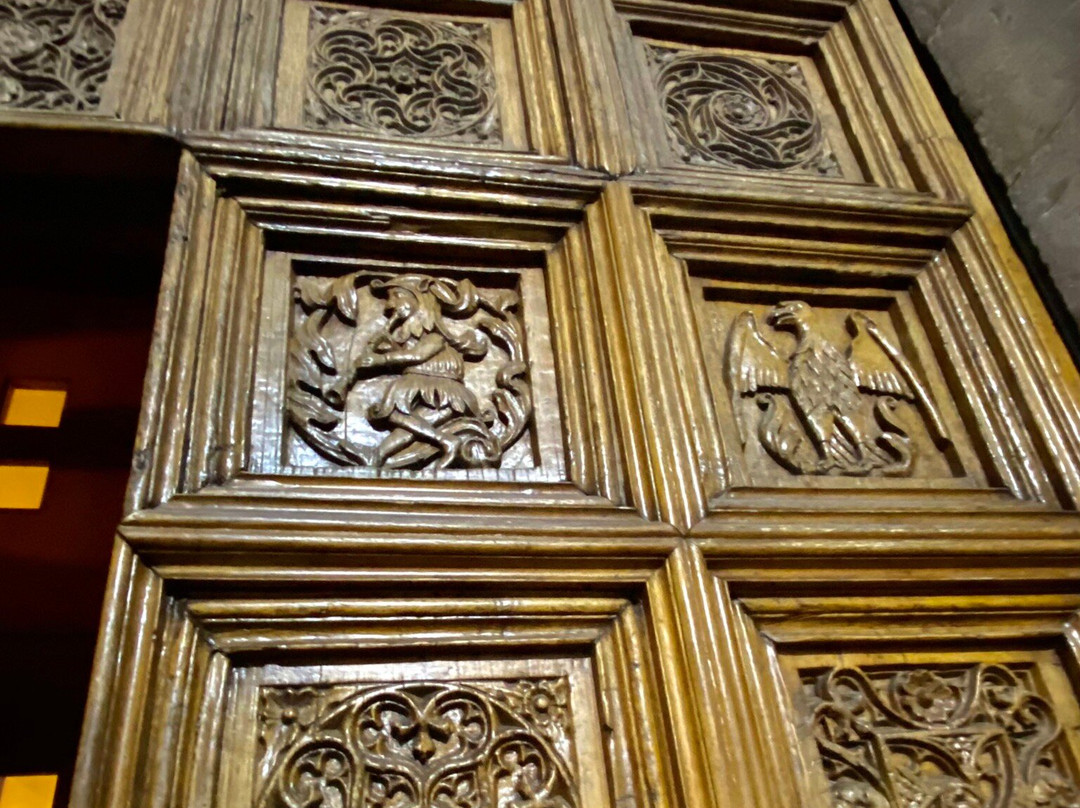
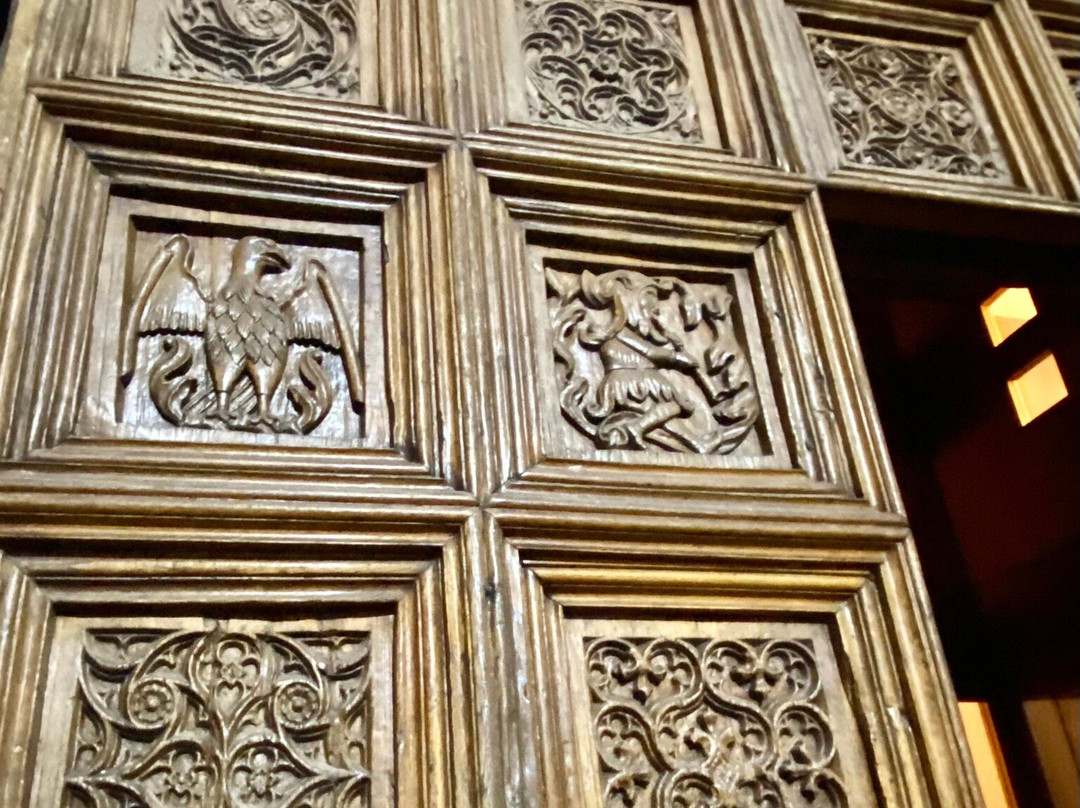
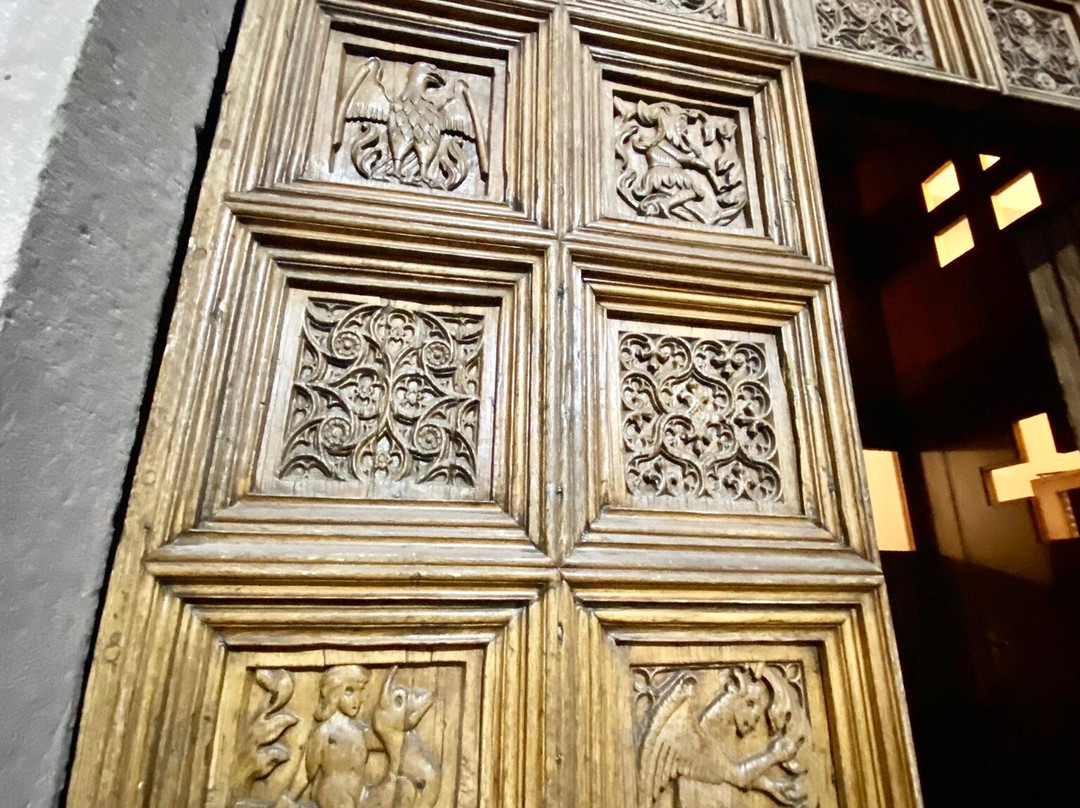
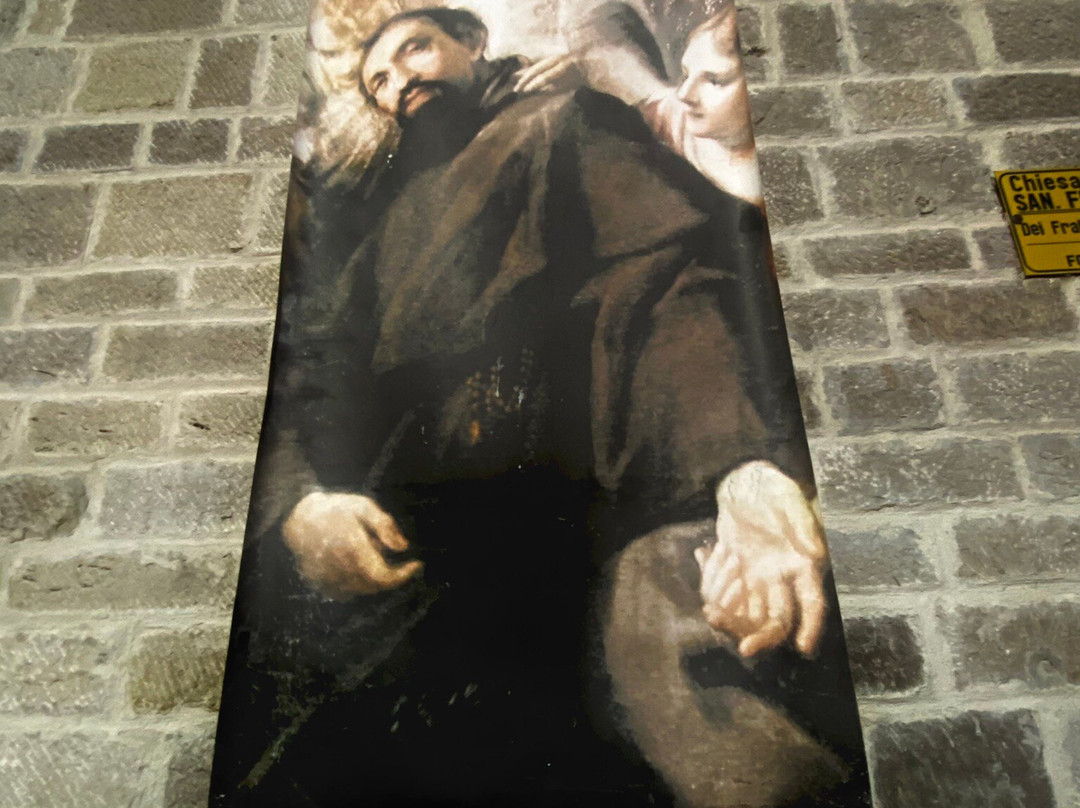
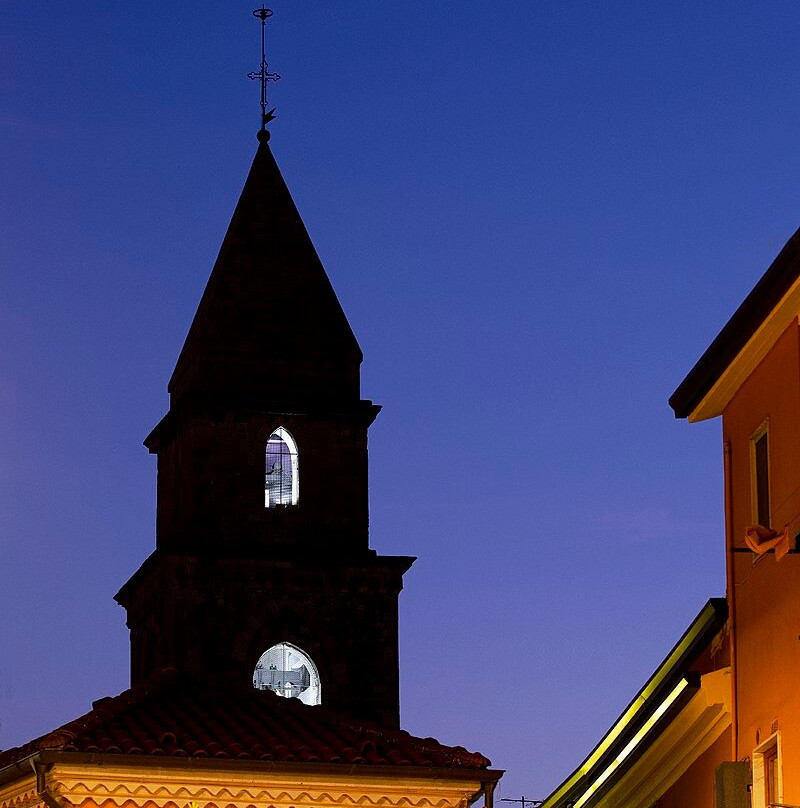
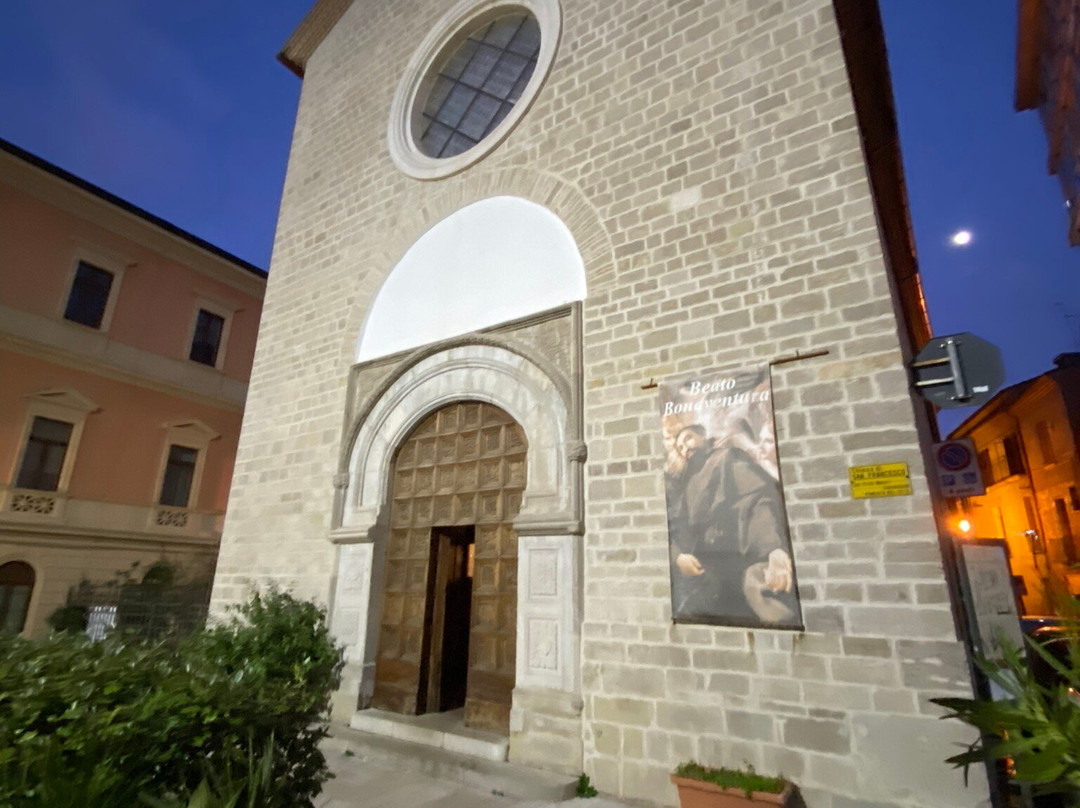
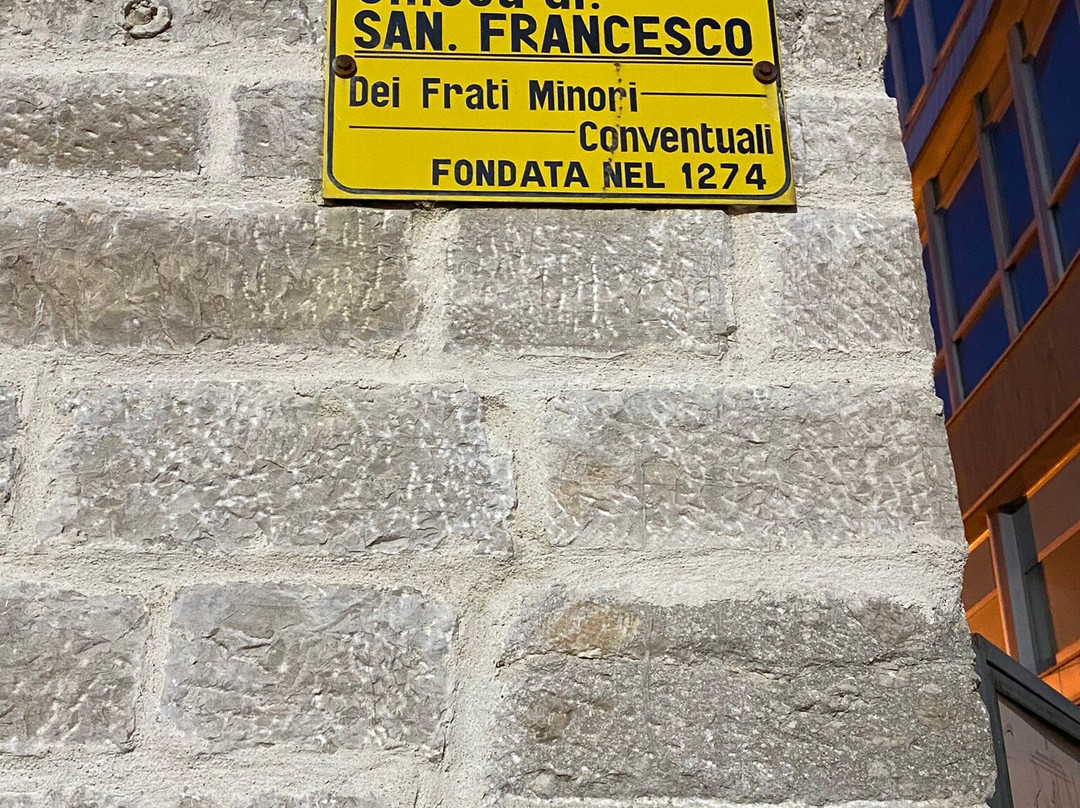
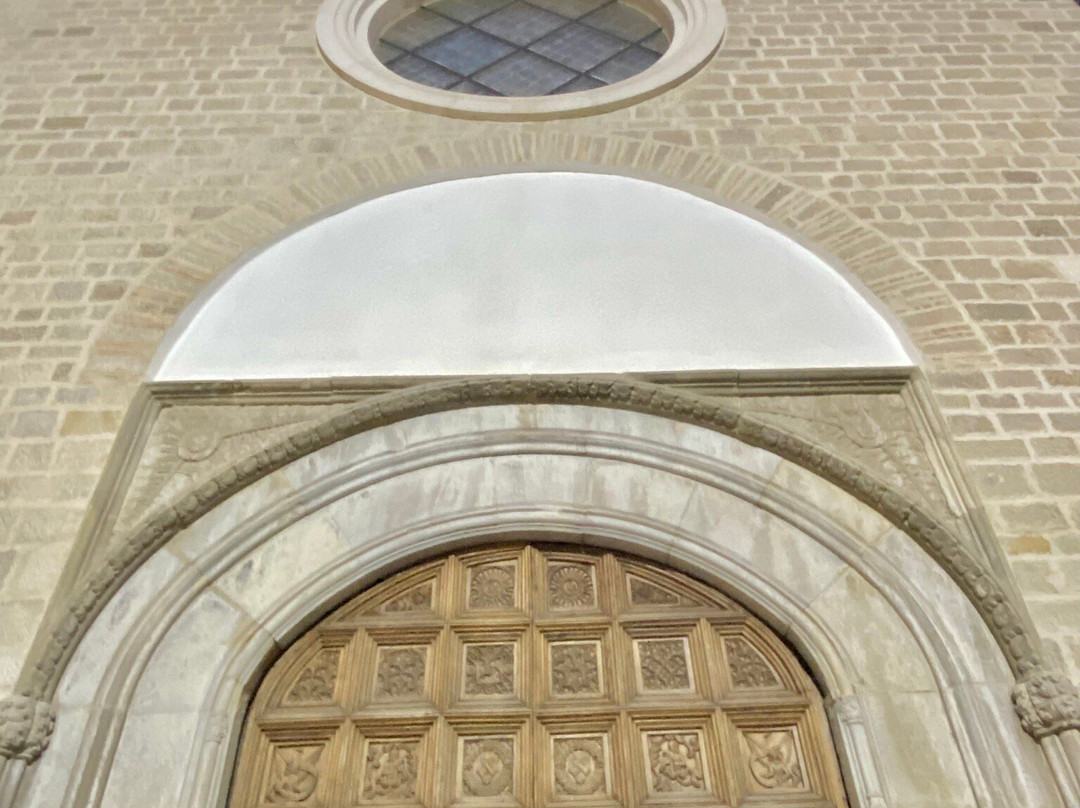
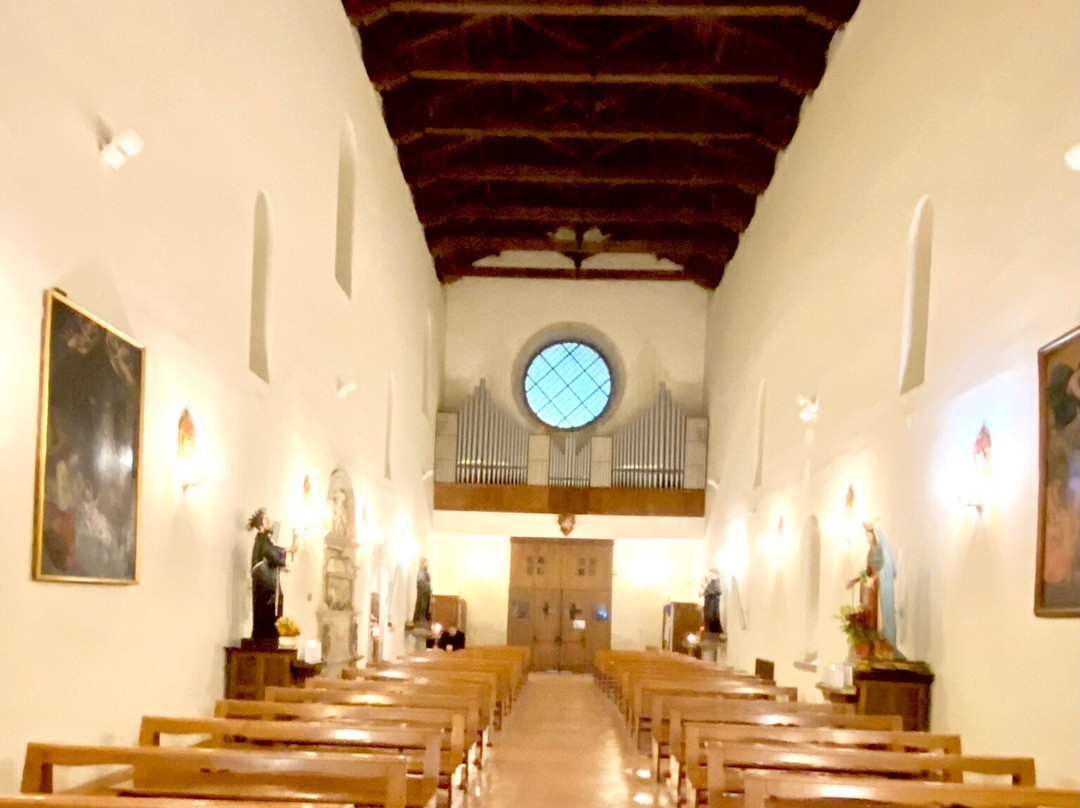
此点评仅代表旅行者个人的主观意见,并不代表TripAdvisor以及其合作方的意见。
关于我们
|
新闻动态
|
商务合作
|
会员中心
|
业主中心
|
业主通
|
常见问题
|
意见反馈
|
联系我们
|
营业执照
© 2025 Tripadvisor 版权所有。
使用条款 |隐私政策 |网站工作原理
部分照片由 VFM Leonardo 提供。
* Tripadvisor不是旅行社,也不是旅游预订服务代理商。我们提供免费、客观、公正的旅游资讯服务。 (显示更多)
TripAdvisor LLC 既不是预订代理商,也不是旅游运营商,不会向网站用户收取任何服务费。 按照规定,在 Tripadvisor 发布机票价格、游览和旅行套餐的合作伙伴(航空公司、旅行提供商及预订代理商),其标价须包含所有费用和附加费用。 例如, 机场出入境税费、消费税与其他服务费、手续费、杂费及附加费用。 当您向我们的某个合作伙伴进行预订时,请务必查阅他们的网站以了解当地行政部门要求的所有适用费用的具体情况。 除非另有说明,机票价格通常指的是一个人的价格(以人民币计)。
为方便起见,TripAdvisor LLC 根据从我们的预订合作伙伴获取的空房率计算每个酒店的均价。 对于游览和景点来说,所显示价格通常是每位成人的最低可用价格。 对于列出的任何旅行套餐或优惠,TripAdvisor LLC 无法保证任何特定的费率或价格。 此外,酒店均价每晚会更新,并以您的首选币种表示(使用现行汇率)。 由于这些已换算的价格是预估价格,因此,有关具体金额和币种请与预订网站进行核实。
此外,TripAdvisor LLC 无法保证我们网站上宣传的价格随时有效。 标价可能需要预订一定天数才能生效,或有不可用日期、使用条件或限制。
TripAdvisor公司对外部网站的内容一概不负责。优惠价格中不含税和其他费用。
ICP证:沪B2-20200433
沪ICP备20013175号
 沪公网安备31010502005427号
沪公网安备31010502005427号鹰程信息技术(上海)有限公司
货币/国家及地区
¥CNY
中国

